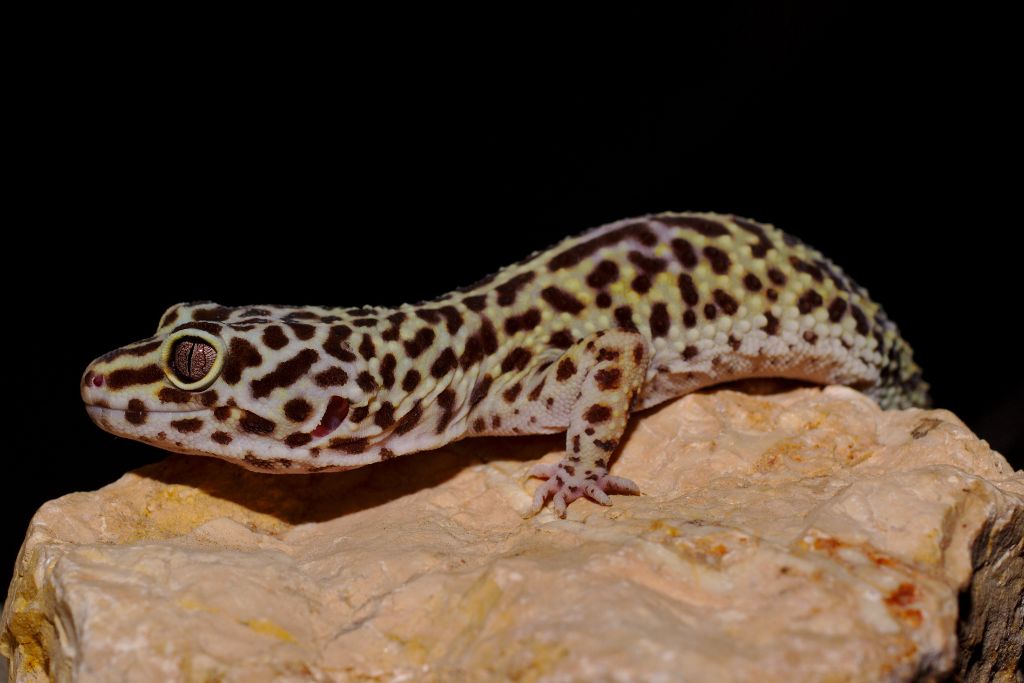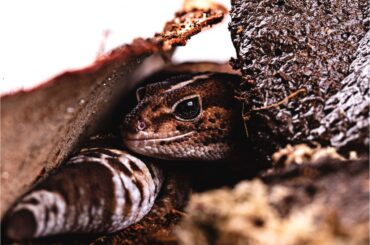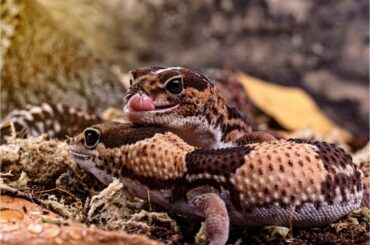What makes leopard geckos so captivating to watch? Have you ever seen one stretch out in a peculiar yet adorable manner? Ever wondered what this unique pose is called? Welcome to the fascinating world of leopard gecko “splooting.”
Splooting is where the leopard gecko stretches its legs out behind it, often appearing as if it’s relaxing or sunbathing. This quirky pose has captured the hearts and curiosity of reptile enthusiasts everywhere.
People find this behavior both amusing and intriguing. Some even consider it a sign of a happy and comfortable gecko. Whether you’re a seasoned reptile lover or new to the gecko game, the allure of splooting is hard to resist.
What is Splooting?
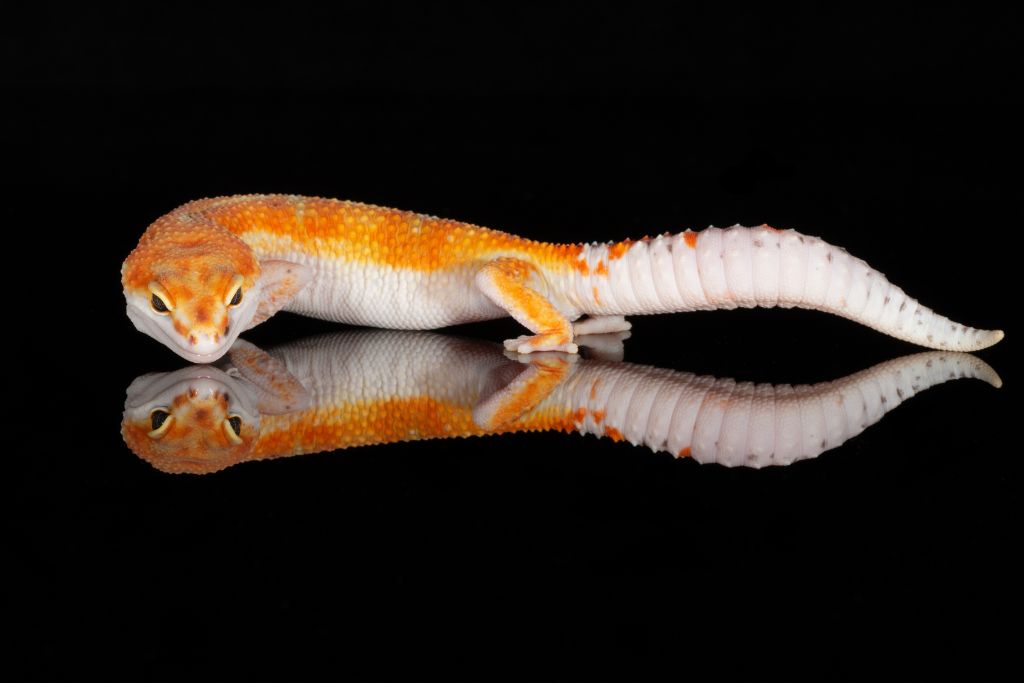
Splooting is when a leopard gecko stretches its legs out behind it and adopts a relaxed posture. Imagine a gecko looking like it’s lounging by a pool; that’s splooting for you. This behavior is not just cute; it’s a sign that your gecko feels safe and comfortable in its environment.
You might have seen dogs or cats do something similar. They sprawl out on the floor, legs extended, looking utterly relaxed. While it’s tempting to think all animals sploot for the same reasons, each species has motivations. For leopard geckos, splooting often happens when they are regulating their body temperature or simply taking it easy.
Why do people care about a gecko stretching its legs? Well, understanding splooting can offer insights into your pet’s well-being. A splooting gecko is usually a happy gecko. And who doesn’t want their pet to be happy?
The Reasons Behind Gecko Sploot
Have you ever wondered why your leopard gecko decides to sploot? Explore the various causes of this captivating behavior.
- Temperature Regulation: They are cold-blooded creatures. Leopard geckos lying down helps them regulate their body temperature by exposing more surface area to the heat source.
- Comfort and Relaxation: When a gecko feels safe and secure, it’s more likely to sploot. This pose allows them to relax their muscles and enjoy their surroundings fully.
- Stretching and Flexibility: Like humans, geckos need to stretch their muscles. Splooting can be a form of stretching that helps maintain flexibility and overall health.
- Sign of Well-being: A splooting gecko is usually happy and healthy. Seeing your pet in this pose is a good indicator that they’re comfortable in their environment.
- Social Communication: Some experts believe that splooting might be a way for geckos to communicate with each other. While not proven, it’s an exciting theory that adds another layer of intrigue to this behavior.
Observations in the Wild and Captivity
Splooting isn’t just a quirky behavior seen in pet geckos; it happens in the wild, too. Observers have spotted leopard geckos in their natural habitats, like the deserts of Asia, doing the sploot. The behavior seems to serve the same purposes: temperature regulation and relaxation.
Researchers have started to take an interest in comparing splooting in wild and captive geckos. While comprehensive studies are still in the works, initial observations suggest that the behavior is consistent across different environments. Whether in a cozy terrarium or the vast desert, a splooting gecko is usually content.
Splooting and Health
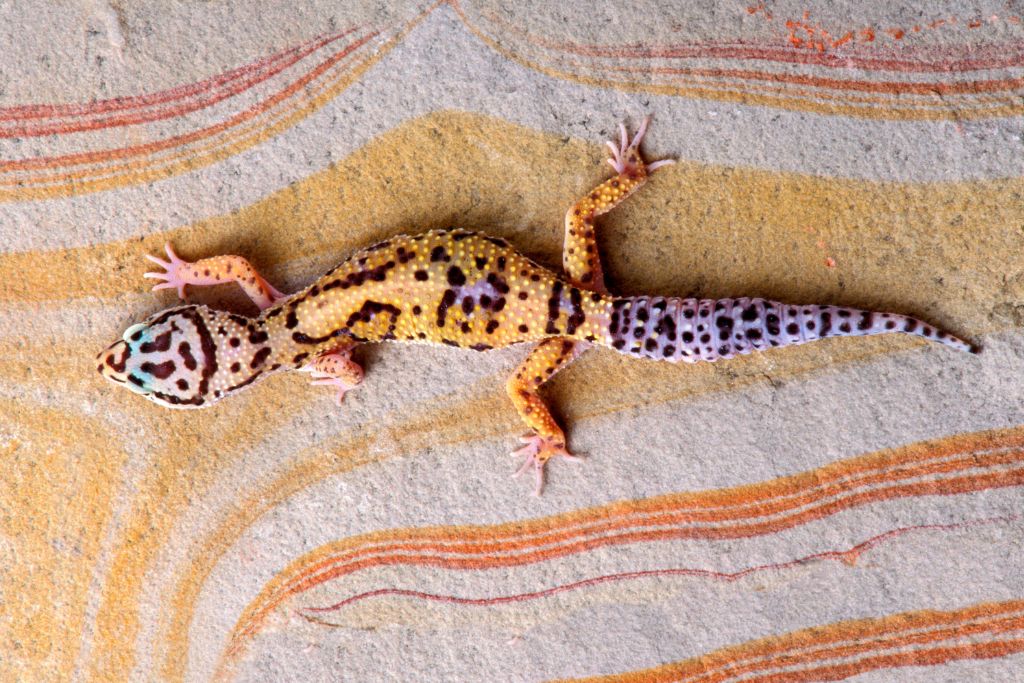
Splooting can be a good sign regarding your leopard gecko’s health. Often, a gecko that sploots regularly feels safe, secure, and comfortable in its environment. This behavior can serve as a quick check on your pet’s well-being. If you see your gecko splooting, you can usually sigh with relief, knowing it’s likely in good shape.
The absence of splooting doesn’t automatically mean something’s wrong. Geckos have different personalities and comfort levels. Some might not sploot as often but are still perfectly healthy.
If your gecko stops splooting suddenly and shows other signs of stress or illness, it’s time to consult a vet. But remember, not all geckos are frequent splooters, and that’s okay.
Tips for Encouraging Natural Behaviors
Want to see more of your leopard gecko’s natural behaviors, including splooting? Creating the right environment can make all the difference. Here are ways to make your gecko feel at home and promote those cute sploots:
- Maintain Optimal Temperature: Keep the temperature in your gecko’s enclosure between 75 and 90 degrees Fahrenheit. Use a heat lamp or under-tank heater to achieve this range.
- Offer Multiple Hide Spots: Geckos love to hide. Provide at least two hiding spots in the enclosure to help your pet feel secure and relaxed.
- Use the Right Substrate: Choose a substrate that mimics the gecko’s natural habitat. Avoid sand, though, as it can cause impaction. Opt for reptile carpet or paper towels instead.
- Keep Humidity in Check: Maintain a 40-60% humidity level. Use a hygrometer to monitor it and mist the enclosure if needed.
- Provide a Balanced Diet: Feed your gecko various insects like crickets, mealworms, and Dubia roaches. Dust them with calcium and vitamin D3 supplements.
- Regular Cleaning: Keep the enclosure clean to prevent bacterial growth. A clean home is a happy home for your gecko.
- Observe and Adapt: Pay attention to your gecko’s behavior. If you notice any changes, adjust the environment accordingly.
Ethical Considerations
While splooting is a natural behavior, it’s crucial to approach it with ethical considerations in mind. Forcing or manipulating your gecko into splooting for the sake of a cute photo crosses ethical boundaries. Always prioritize your pet’s well-being over aesthetic or entertainment value.
Creating a suitable environment for your leopard gecko is a responsibility, not just a choice. Strive to mimic their natural habitat as closely as possible. This approach encourages natural behaviors like splooting and ensures that your pet lives a healthy, stress-free life. Remember, ethical pet ownership means putting your animal’s needs first.
Conclusion
Splooting is one of the many ways your leopard gecko shows its unique personality and comfort level. Take the time to observe and appreciate these little quirks – they make your pet special. Understanding behaviors like splooting deepens your connection with your gecko and ensures its well-being.
The next time you see your leopard gecko stretch out in that adorable sploot, smile. You’ve created a home where your scaly friend feels safe, happy, and free to be itself. That’s something to be proud of.
FAQs
Why Does My Leopard Gecko Sploot?
Your leopard gecko likely sploots to regulate body temperature, stretch muscles, or simply relax. It’s usually a sign of comfort and well-being.
Is It Normal for a Leopard Gecko to Lay on Its Back?
No, it’s not normal. If your leopard gecko is lying on its back, it could be a sign of illness or distress. Consult a vet immediately.
How Do I Know if My Leopard Gecko is Relaxed?
A relaxed leopard gecko will have a calm demeanor, smooth breathing, and may engage in natural behaviors like splooting. It will also eat regularly and explore its environment without signs of stress.

